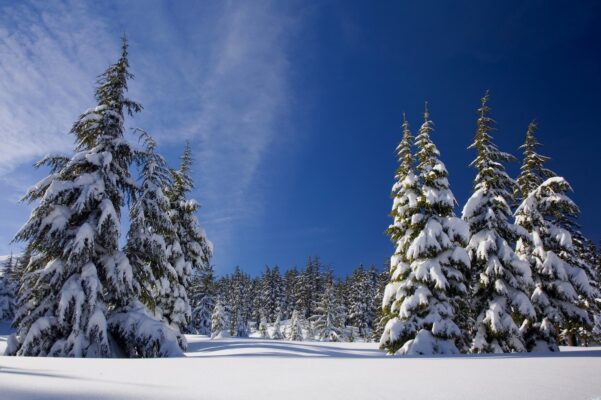When it comes to planting trees, understanding the best time to plant trees is essential for ensuring their healthy growth and establishment. Timing can significantly impact how well a tree takes root in its new environment, interacts with seasonal weather conditions, and ultimately thrives. In this article, we will delve into the optimal times for planting trees across different seasons, providing you with insights and knowledge to help you make informed decisions for your landscaping and environmental endeavors.

The Importance of Seasonal Awareness in Tree Planting
Before diving into specific seasonal planting guidelines, it’s vital to comprehend the broader significance of seasonal awareness when planting trees.
Understanding Tree Dormancy
Tree dormancy is a state of reduced metabolic activity that occurs seasonally, primarily during winter months. During this period, trees conserve energy, directing resources inward and minimizing their need for water and nutrients.
This dormancy phase is significant because:
- It allows for a smoother transition when planting.
- Trees are less stressed when they are not actively growing.
- Root establishment can occur without the immediate demands of supporting foliage.
Planting a tree while it is dormant enables its roots to settle before the vigorous growth of spring begins. The timing of planting within seasonal cycles can determine the long-term health of the tree and its resistance to pests and diseases.
Climate Zones and Their Influence
Different climate zones influence the best time to plant trees dramatically. Zones range from tropical climates, where trees can be planted year-round, to temperate zones with stark differences in seasonal temperatures. Understanding your local climate zone can provide valuable insight into when and how to plant effectively.
For instance:
- In warmer climates, late fall or early winter may be ideal as it allows trees to start establishing roots before the hot summer sets in.
- In colder regions, early spring or after the last frost can provide the safest conditions for planting.
Understanding these subtleties can empower gardeners and landscape enthusiasts to make better choices regarding which trees to plant and when.
Soil Conditions and Their Impact
The condition of the soil plays an equally critical role in determining the best time to plant trees. Before planting, consider the following:
- Soil temperature should be adequately warm to promote root development.
- Moisture levels influence how well a tree establishes itself.
Soil should ideally be moist but not saturated, allowing for good drainage while retaining enough moisture for roots to absorb. Testing your soil’s pH and nutrient levels can further guide your planting strategies.
Spring Planting: Maximizing Growth Potential
Spring is often heralded as the quintessential season for planting due to its conducive weather conditions. As the earth thaws and daylight hours increase, trees awaken from dormancy and prepare for new growth. Let’s explore why spring is such an ideal time for planting and how various factors come into play.

Weather Patterns in Spring
Spring typically boasts milder temperatures and increased precipitation, providing an ideal environment for young trees.
The advantages include:
- Reduced risk of frost damage after the last expected frost date.
- Abundant rain helps establish roots without requiring excessive watering from the gardener.
These weather patterns create optimal conditions for seedlings and saplings to thrive. Spring also fosters vibrant greenery as the surrounding ecosystem wakes up, encouraging pollinators and beneficial insects that contribute to the overall health of newly planted trees.
Choosing the Right Species
In spring, many species of deciduous trees, such as oaks, maples, and birches, perform exceptionally well when planted.
Considerations for selecting the right species include:
- Local adaptability: Make sure to choose trees that are native or well-suited to your local climate.
- Growth habits: Understand whether you want a fast-growing shade tree or a slow-growing ornamental tree.
Selecting the right species can ensure success and satisfaction in your planting efforts, setting the stage for future growth and beauty.
Preparing for Planting
Effective preparation is key to successful spring planting.
Your preparation checklist might include:
- Assessing soil quality and amending it with compost or other organic matter as needed.
- Digging holes deep enough to accommodate the root systems without bending them.
- Watering the newly planted tree thoroughly to eliminate air pockets in the soil.
By investing time upfront in preparation, you increase the likelihood of a successful establishment period during spring.
Summer Planting: A Unique Challenge
Summer presents unique challenges and opportunities for planting trees. While some may argue that July and August are too hot for tree planting, with careful planning, it can still be an effective time to introduce new trees to your landscape.

Heat and Water Management
One of the most significant challenges during summer is managing heat stress and maintaining adequate moisture levels.
To ensure a successful planting experience, consider:
- Planting early in the morning or late in the evening to avoid the harsh midday sun.
- Providing a deep watering regime to ensure that the roots can access moisture deeper in the soil.
Heat stress can compromise the health of newly planted trees, making it crucial to monitor soil conditions regularly and adjust irrigation practices accordingly.
Selecting Drought-Resistant Varieties
Given the potential for drought and heatwave conditions in summer, choosing tree species that are naturally resilient to dry conditions is paramount.
Some excellent choices may include:
- Native species such as pines, junipers, and oaks that have adapted to local climates.
- Fruit trees like peach and fig, which often do well in warm, sunny environments.
Selecting the right variety not only increases the chance of survival but also promotes biodiversity and resilience in your local ecosystem.
Mulching and Shade Techniques
Mulching is a highly effective strategy for protecting young trees from the intense heat of summer.
Benefits of mulching include:
- Retaining moisture in the soil, reducing the frequency of watering.
- Regulating soil temperature, keeping the roots cool during extreme heat.
Creating temporary shade structures using burlap or shade cloth can also provide relief from direct sunlight until trees become established. By employing both methods, you can enhance the chances of your trees thriving during the hottest months.
Fall Planting: Setting Up for Success
Fall is often regarded as one of the best times to plant trees, as it strikes a perfect balance between moderate temperatures and ample rainfall. Understanding the nuances of this timeframe can set you up for long-term success.

Advantages of Cooler Weather
As summer transitions into fall, the cooler weather becomes a huge advantage for gardening enthusiasts.
Key benefits include:
- Reduced stress on newly planted trees as they face lower temperatures than in the preceding summer.
- Frequent rainfall provides natural irrigation, ensuring the roots remain hydrated.
Cooler weather encourages trees to focus on root development rather than top growth, allowing for a more robust foundation by the time spring arrives.
Timing Your Planting
Planting in early fall—ideally six weeks before the first expected frost—allows trees sufficient time to establish their roots before winter sets in.
Best practices for timing include:
- Monitoring local weather forecasts to gauge when frost is expected.
- Choosing the right window based on your region’s particular climate patterns.
Successful timing can lead to healthier trees that are better prepared to withstand the stresses of winter.
Preparing for Winter
While fall is an excellent planting time, it’s essential to prepare for the upcoming winter months.
Strategies for preparation consist of:
- Applying mulch around the base of the newly planted tree to insulate the roots and retain moisture.
- Watering thoroughly to ensure that the tree has adequate hydration before the ground freezes.
Taking these steps enhances the probability of your trees surviving their first winter and thriving in the following spring.
Winter Planting: An Unexpected Opportunity
Although many gardeners shy away from planting trees in winter, certain conditions allow it to be a viable option for specific species and situations. While challenging, winter planting can yield surprising rewards.

Advantages of Bare-Root Plants
Winter is an opportune time for planting bare-root trees, which are available during the dormant season.
Benefits of choosing bare-root plants include:
- Cost-effectiveness, as bare-root plants are generally cheaper than container-grown counterparts.
- Easier handling and planting since they don’t have the heavy soil ball attached.
These advantages can facilitate planting during a typically low-activity gardening period.
Assessing Soil Conditions
Soil conditions during winter can be tricky, especially if your area experiences freezing temperatures.
To assess whether it’s suitable for planting:
- Ensure the soil is workable, meaning it shouldn’t be overly frozen or saturated.
- Choose days when the ground is thawed to dig holes without difficulty.
Proper assessment will help you determine if your winter planting endeavor is likely to succeed.
Protective Measures Against Frost
If planting in winter, it is crucial to consider protective measures to enhance the chances of survival.
Implement strategies such as:
- Wrapping the trunks of young trees with burlap or protective coverings to prevent frost damage.
- Regularly monitoring weather conditions to provide necessary care during unexpected cold snaps.
These precautions can help mitigate winter-related risks, fostering a safe environment for newly planted trees.
Conclusion
Determining the best time to plant trees is a multifaceted decision influenced by seasonal changes, climate conditions, and specific tree species. Regardless of the season you choose to plant, attention to detail—ranging from soil quality to type of tree—will pay dividends in their long-term health and stability.
By understanding the unique requirements and advantages of each season, you empower yourself to create a thriving environment for your trees. Whether you decide to plant in the invigorating spring, the challenging summer, the cozy fall, or even the chilly winter, your thoughtful approach will not only beautify your surroundings but also contribute positively to your local ecosystem. Embrace the rhythms of nature, and watch as your trees transform over the seasons.
